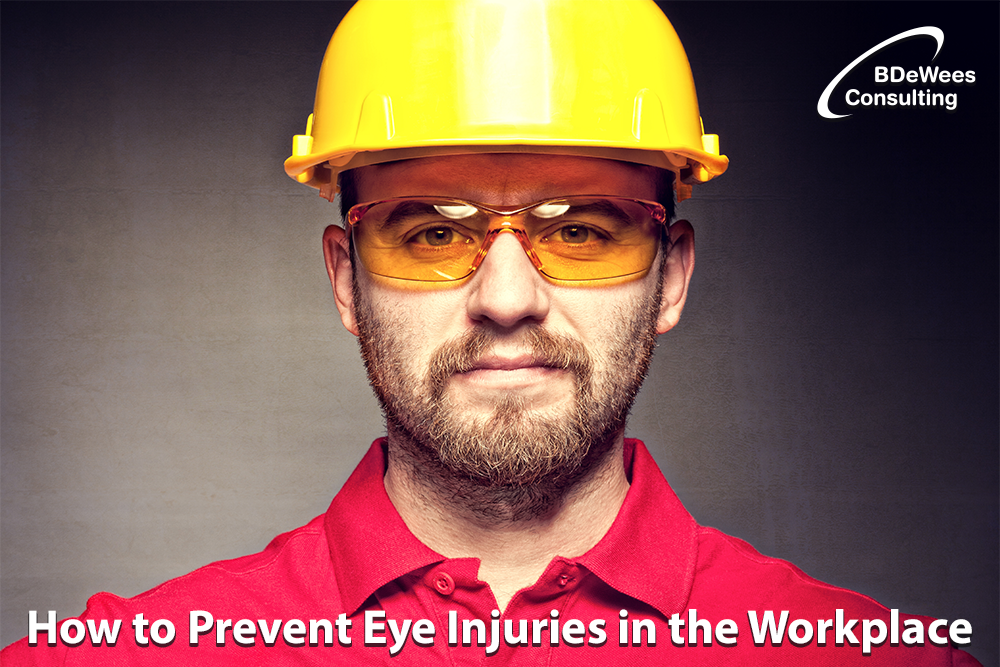How to Prevent Eye Injuries in the Workplace

It’s easy to get complacent about eyewear when working day-to-day, but not being protected can be more dangerous than you think. The National Institute for Occupational Safety and Health (NIOSH) reports that every day about 2,000 U.S. workers sustain job-related eye injuries that require medical treatment. Ninety percent of on-the-job eye injuries could be avoided if workers wore eye protection, according to the American Academy of Ophthalmology.
Why do workers experience eye injuries?
Nearly three out of five injured workers were not wearing eye protection at the time of the accident or were wearing the wrong kind of eye protection for the job.
What are the potential hazards?
Workplace eye protection is needed when the following potential eye hazards are present:
- Projectiles (dust, concrete, metal, wood and other particles)
- Chemicals (splashes and fumes)
- Radiation (especially visible light, ultraviolet radiation, heat or infrared radiation, and lasers)
- Bloodborne pathogens (hepatitis or HIV) from blood and body fluids
The majority of workplace eye injuries are caused by small particles or objects striking or abrading the eye, according NIOSH. An on-the-job eye injury can cause lasting and permanent vision damage, potentially disabling a worker for life.
The U.S. Bureau of Labor Statistics (BLS) found that 70 percent of eye injuries studied resulted from flying or falling objects or sparks striking the eye. Injured workers said that nearly three-fifths of the objects were smaller than a pinhead.
How much money could eye injuries cost?
Eye injuries suffered at work cost more than $300 million per year in lost productivity, treatment and compensation.
How can you prevent eye injuries?
NIOSH lists five main types of eye protection and recommends that workers consider the hazards that are present before selecting which type to wear:
- General safety glasses (including hybrid safety glasses or goggles): This type of eye protection is ideal for general work that exposes workers to dust and flying particles. Ensure safety glasses feature anti-fogging capabilities and side protection. For added protection, wear safety glasses that have foam or rubber around the lenses to help keep particles out.
- Safety goggles: NIOSH states that safety goggles are a good choice to help protect workers from high impacts, chemical splashes and welding light. When selecting safety goggles, look for goggles with ample airflow, little fogging and maximum splash protection.
- Faceshields: Faceshields help protect workers from high-impact, chemical and bloodborne hazards. Select faceshields that are tinted or have a metal coating for heat protection. Be aware that you should still wear safety glasses or goggles underneath a faceshield, as the curve of it can direct chemicals and particles into the eyes.
- Full-facepiece respirators: This is the best form of eye protection from smoke, dust and chemicals, according to NIOSH. However, note that these types of respirators do not seal completely over regular or safety glasses. If you need to wear a full-facepiece respirator and glasses, ensure you obtain prescription inserts that are compatible with a respirator and approved for use with your specific respirator.
- Welding eye protection (including helmets, goggles, faceshields and respirators): Welding can expose workers to light that can seriously burn the eyes. Workers should always wear safety goggles or glasses underneath welding helmets or faceshields for additional protection. Ensure workers near welding operations wear appropriate eye protection as well.
The workplace does not need to be a threat to your employee’s eyesight if they wear the correct eye protection that is in good condition. Contact us today to see how we can help improve the safety of your company.
Jim DePew
Vice President & Consultant
Mobile: (330) 631-9022
Office: (330) 915-2355 Ext: 103
Email: jdepew@bdewees.com
